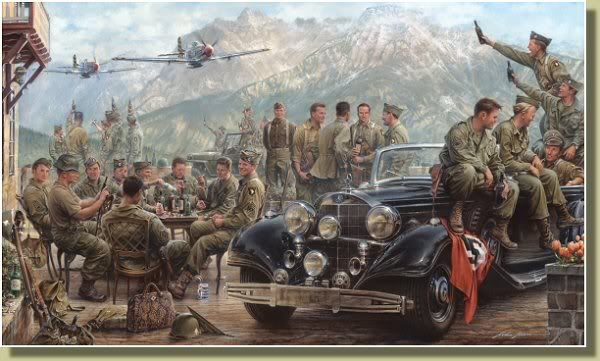The Skytrain and a tribute to the Douglas C-47 Dakota in World War 2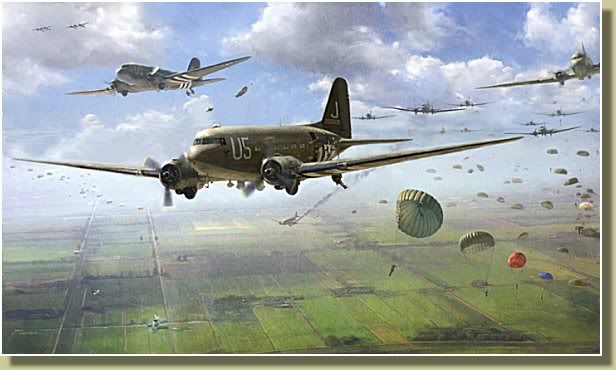
The DC-3, which made air travel popular and airline profits possible, is universally recognized as the greatest airplane of its time. Some would argue that it is the greatest of all time. Design work began in 1934 at the insistence of C.R. Smith, president of American Airlines. .
The DC-3 did not go unnoticed by one of Douglas's oldest customers - the U.S. Army. In addition to the 455 DC-3 commercial transports built for the airlines, 10,174 were produced as military transports during World War II.
By 1941 the old Air Corps had been transformed into the Army Air Force and it selected a modified version of the DC-3 - the C-47 Skytrain - to become its standard transport aircraft. A reinforced fuselage floor and the addition of a large cargo door were the only major modifications.
With Pratt & Whitney engines of 1,200 hp each, the C–47 had a top speed of 220 mph with a maximum range of fifteen hundred miles. Its crew typically consisted of pilot and copilot and usually included a crew chief to oversee cargo handling.
As a supply plane, the C-47 could carry up to 6,000 pounds of cargo. It could also hold a fully assembled jeep or a 37-mm cannon. As a troop transport, it carried 28 soldiers in full combat gear.
By war’s end, some thirteen thousand C–47 variants had been delivered, plus two thousand more built under license by foreign manufacturers.
101st Airborne assemble at Uppottery Airfield England for their drop into Normandy.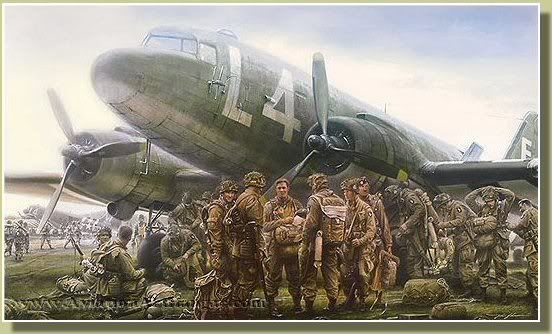 Paratroop combat load
Paratroop combat loadThe wartime C–47 transports discarded the roomy, twenty-one–seat interiors of the airline version and installed bench seats along the fuselage walls to seat thirty-two passengers or twenty-seven troops in combat gear.

101st Airborne on their way to Normandy 6th June 1944 At 0115 am on the 6th June 1944, the 101st Airborne parachuted into Normandy about eight miles behind the invasion beaches and about five hours before the beach landings.
Those young guys were pretty scared. They had reason to be. They were dropping by themselves into occupied Europe.
Many were killed in the actual jump, either in action on the ground or by anti aircraft fire.
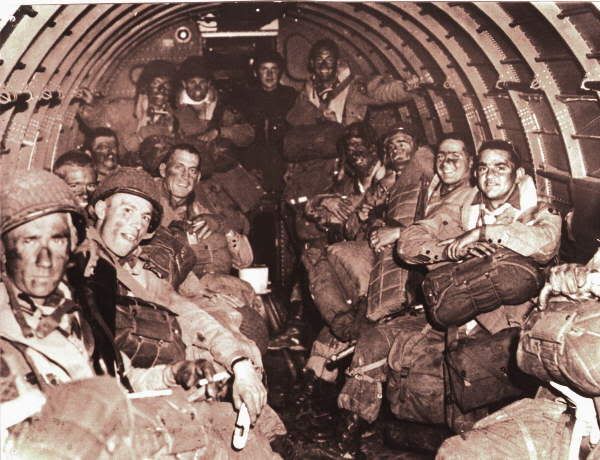 Some of the guys with a souvenier
Some of the guys with a souvenier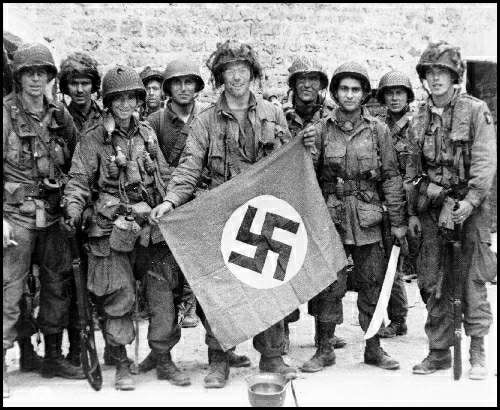 From the drop on D-Day behind the invasion beaches, the 101st finished their war in Germany at the Eagles Nest.
From the drop on D-Day behind the invasion beaches, the 101st finished their war in Germany at the Eagles Nest.
The painting below depicts their celebration of the end of World War 2 in Europe